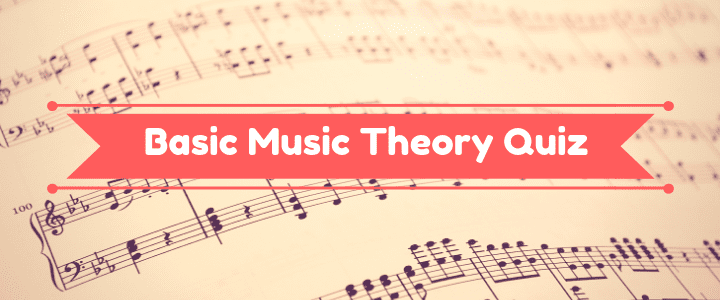
A knowledge of music theory is absolutely indispensable to musicians. For beginners, it can seem intimidating, but experienced musicians will attest that theory is well worth the effort needed to master it.
While you can certainly acquire proficiency on an instrument without a knowledge of theory, you’ll miss out on the depth of understanding that it provides. Music theory is also extremely useful for musicians.
Think of music theory as your tool box. It enables you to analyze, transcribe, and replicate songs. It also equips you to communicate effectively with other musicians.
A sound knowledge of theory enables you to compose your own music with confidence and enjoy a whole world of possibilities!
Can you pass a music theory quiz for beginners? This quiz is an excellent way to test your knowledge of basic theory. Give it your best shot and if you get stuck, we’ll go over each answer in detail below.
Music Theory Quiz: Review
How did you score on our music theory test? Let us know in the comments section below! To check your work, here is a review of each question and answer.
1. The numbers at the beginning of a piece of music represent the: (C) Time signature.
The time signature indicates the meter of the music, with the upper number representing the number of beats per measure and the lower number indicating the value of each beat. For example, 4/4 tells you that you have four beats per measure, and the quarter note gets the beat.
2. The lines in the treble staff are, from bottom to top: (C) EGBDF.
Think, “Every Great Band Draws Fans” or “Every Good Boy Does Fine.” Don’t confuse this with the bass staff, which we asked about later in the quiz.
3. A 16th note will have the following: (B) Two flags.
These indicate that the beat has been subdivided twice. Sixteenth notes break a quarter note into four parts, for example. They are very common in music.
4. A dotted half note equals how many quarter notes? (B) Three.
One dot after a note indicates that half of that note’s value is added to the duration. A half note is equal to two quarter notes, so the dot adds one quarter note. Now you just have to solve the simple math equation: 2+1=3.
5. The musical term used to describe differences in volume is: (C) Dynamics.
This is a very expressive element of music. In the most basic sense, pp = very quiet, p = quiet, mp = moderately quiet, mf = moderately loud, f = loud, ff = very loud. The performer has a bit of creative license with interpretation.
6. The symbol used to denote the range of a particular staff is a: (C) Clef.
The clef at the beginning of a staff indicates the pitches and range of that piece of music. We use the treble clef, the bass clef, and the C clef. The rhythm clef is an exception, as it is used for non pitched percussion notation.
7. The small lines above or below a staff are called: (C) Ledger lines.
These indicate notes that extend beyond the range of the given staff. When reading the bass or treble staves, middle C will always be on a ledger line (one above the bass or one below the treble).
In the treble staff, any note A5 and above will be on ledger lines. In the bass staff, anything E2 and below will be on ledger lines. These are also used often in music.
8. The spaces in the bass staff, from bottom to top are: (C) ACEG.
Think, “All Cars Eat Gas.” Notice that this question is specifically asking about the spaces, not the lines.
More Music Theory Tests
Want to take another music theory quiz to sharpen your skills? Here are a few excellent resources to check out.
Enjoy exploring music theory and the freedom of expression that it can afford you. Music theory translates to all instruments, so learning it will make you a more versatile and well-rounded musician!
If you want to take your knowledge of theory to the next level, you can easily find affordable and reputable music theory instructors for online or local lessons.
 Post Author: Tracy D.
Post Author: Tracy D.Tracy D. teaches music theory, guitar, piano and more in Edmond, OK, as well as online. She’s been teaching since 2010 and has her Bachelor’s in Music Education from Oklahoma Christian University. Learn more about Tracy here!
Original article is here:Take Lessons
No comments:
Post a Comment